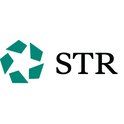2020-21 Australian accommodation monitor shows performance divide between capitals and regional areas
ADELAIDE — Australian accommodation declines for the 2020-21 financial year were worse for capital markets than regional areas, according to STR’s collection of national accommodation statistics through the Australian Accommodation Monitor.
The Australian Accommodation Monitor is a national collection of performance statistics for accommodation providers, including hotels, motels, serviced apartments and holiday cabins.
During the 2020-21 financial year (1 July to 30 June), Australia recorded decreases in each of the three key performance metrics: occupancy (-17.4% to 49.6%), average daily rate (-5.1% to AUD171.77) and revenue per available room (-21.5% to AUD85.15). This performance illustrates the multitude of factors that accommodation operators experienced over the last 12 months, including recovery from the initial COVID-19 lockdowns, circuit breaker lockdowns, recovery from the summer bushfires of 2019-2020 and consumer travel decisions.
“Performance over the last year improved consistently from Q3 2020 to Q2 2021,” said Matthew Burke, STR’s regional manager for the Pacific region. “The clearest divide of performance was between Australia’s nine capital markets versus the regional areas, which showed just how initial intrastate tourism flourished. Major cities saw a lack of business and group demand, travel they typically rely upon, and ultimately made up seven of the top 10 lowest-performing tourism regions when looking at the year-over-year RevPAR percentage change.”
Of the major markets, the two largest, Melbourne and Sydney, reported year-over-year RevPAR declines of 55.9% and 47.8%, respectively.
The double-digit RevPAR declines were also felt by specific accommodation types, with hotels & resorts experiencing a 27.6% decline in the metric, while serviced apartments saw RevPAR fall 14.2% year over year. Holiday parks, on the other hand, posted a 30.8% increase in the metric, giving further evidence to regional and leisure dominance throughout the financial year.
Among the states and territories, South Australia (56.8%) and Western Australia (56.2%) reported the highest occupancy levels for the year.
“While performance improved over the financial year, it is important to note that the accommodation industry recently has been heavily affected by pandemic restrictions, with the two most populous states in long-term lockdowns and three jurisdictions in partial or full lockdown, limiting travel. The 2021-22 financial year has started from a very challenging position,” said Burke.
Australian Accommodation Monitor
Supported by the Australian Trade and Investment Commission (Austrade), STR collects performance data from accommodation providers throughout Australia. Properties submitting their data to STR receive complimentary benchmarking reports comparing their performance levels against local market averages. The program is free for any accommodation provider in Australia, with data privacy and confidentiality guaranteed. For more information, please visit https://str.com/aam.
About STR
STR provides premium data benchmarking, analytics and marketplace insights for the global hospitality industry. Founded in 1985, STR maintains a presence in 15 countries with a corporate North American headquarters in Hendersonville, Tennessee, an international headquarters in London, and an Asia Pacific headquarters in Singapore. STR was acquired in October 2019 by CoStar Group, Inc. (NASDAQ: CSGP), the leading provider of commercial real estate information, analytics and online marketplaces. For more information, please visit str.com and costargroup.com.
Rebeca Vélez Mínguez
Communications Executive
+44 203 890 0056 ext. 0056
STR
